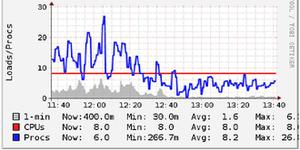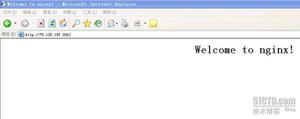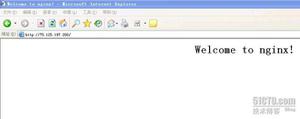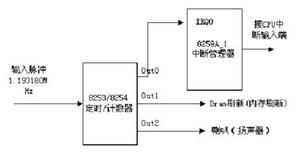浅析C# 委托(Delegate)
C# 中的委托(Delegate)类似于 C 或 C++ 中函数的指针。委托(Delegate) 是存有对某个方法的引用的一种引用类型变量。引用可在运行时被改变。
委托(Delegate)特别用于实现事件和回调方法。所有的委托(Delegate)都派生自 System.Delegate 类。
声明委托(Delegate)
委托声明决定了可由该委托引用的方法。委托可指向一个与其具有相同标签的方法。
例如,假设有一个委托:
public delegate int MyDelegate (string s);
上面的委托可被用于引用任何一个带有一个单一的 string 参数的方法,并返回一个 int 类型变量。
声明委托的语法如下:
delegate <return type> <delegate-name> <parameter list>
实例化委托(Delegate)
一旦声明了委托类型,委托对象必须使用 new 关键字来创建,且与一个特定的方法有关。当创建委托时,传递到 new 语句的参数就像方法调用一样书写,但是不带有参数。例如:
public delegate void printString(string s);
...
printString ps1 = new printString(WriteToScreen);
printString ps2 = new printString(WriteToFile);
下面的实例演示了委托的声明、实例化和使用,该委托可用于引用带有一个整型参数的方法,并返回一个整型值。
using System;
delegate int NumberChanger(int n);
namespace DelegateAppl
{
class TestDelegate
{
static int num = 10;
public static int AddNum(int p)
{
num += p;
return num;
}
public static int MultNum(int q)
{
num *= q;
return num;
}
public static int getNum()
{
return num;
}
static void Main(string[] args)
{
// 创建委托实例
NumberChanger nc1 = new NumberChanger(AddNum);
NumberChanger nc2 = new NumberChanger(MultNum);
// 使用委托对象调用方法
nc1(25);
Console.WriteLine("Value of Num: {0}", getNum());
nc2(5);
Console.WriteLine("Value of Num: {0}", getNum());
Console.ReadKey();
}
}
}
当上面的代码被编译和执行时,它会产生下列结果:
Value of Num: 35
Value of Num: 175
委托的多播(Multicasting of a Delegate)
委托对象可使用 "+" 运算符进行合并。一个合并委托调用它所合并的两个委托。只有相同类型的委托可被合并。"-" 运算符可用于从合并的委托中移除组件委托。
使用委托的这个有用的特点,您可以创建一个委托被调用时要调用的方法的调用列表。这被称为委托的 多播(multicasting),也叫组播。下面的程序演示了委托的多播:
using System;
delegate int NumberChanger(int n);
namespace DelegateAppl
{
class TestDelegate
{
static int num = 10;
public static int AddNum(int p)
{
num += p;
return num;
}
public static int MultNum(int q)
{
num *= q;
return num;
}
public static int getNum()
{
return num;
}
static void Main(string[] args)
{
// 创建委托实例
NumberChanger nc;
NumberChanger nc1 = new NumberChanger(AddNum);
NumberChanger nc2 = new NumberChanger(MultNum);
nc = nc1;
nc += nc2;
// 调用多播
nc(5);
Console.WriteLine("Value of Num: {0}", getNum());
Console.ReadKey();
}
}
}
当上面的代码被编译和执行时,它会产生下列结果:
Value of Num: 75
委托(Delegate)的用途
下面的实例演示了委托的用法。委托 printString 可用于引用带有一个字符串作为输入的方法,并不返回任何东西。
我们使用这个委托来调用两个方法,第一个把字符串打印到控制台,第二个把字符串打印到文件:
using System;
using System.IO;
namespace DelegateAppl
{
class PrintString
{
static FileStream fs;
static StreamWriter sw;
// 委托声明
public delegate void printString(string s);
// 该方法打印到控制台
public static void WriteToScreen(string str)
{
Console.WriteLine("The String is: {0}", str);
}
// 该方法打印到文件
public static void WriteToFile(string s)
{
fs = new FileStream("c:\\message.txt", FileMode.Append, FileAccess.Write);
sw = new StreamWriter(fs);
sw.WriteLine(s);
sw.Flush();
sw.Close();
fs.Close();
}
// 该方法把委托作为参数,并使用它调用方法
public static void sendString(printString ps)
{
ps("Hello World");
}
static void Main(string[] args)
{
printString ps1 = new printString(WriteToScreen);
printString ps2 = new printString(WriteToFile);
sendString(ps1);
sendString(ps2);
Console.ReadKey();
}
}
}
当上面的代码被编译和执行时,它会产生下列结果:
The String is: Hello World
以上是 浅析C# 委托(Delegate) 的全部内容, 来源链接: utcz.com/z/317856.html









